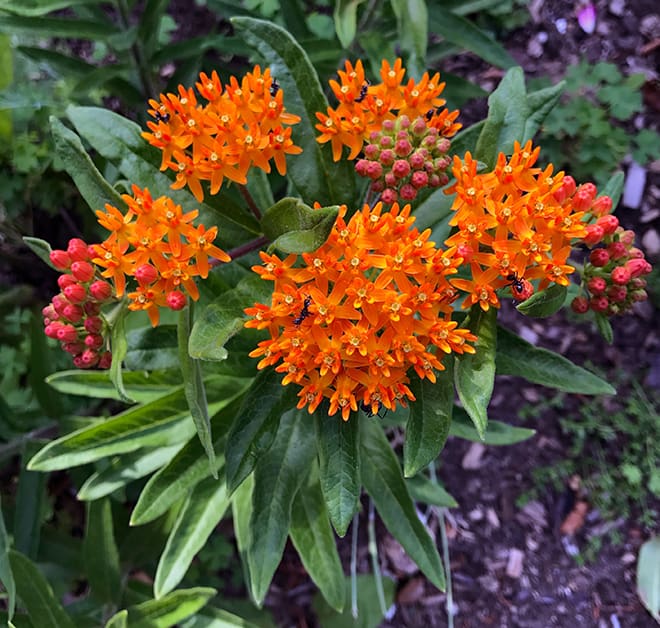Imagine: Her kids came home from school all excited about a science program that had been presented in the auditorium. “Mom! We have to help save the monarch butterflies,” her son said. “They need plants to eat,” her daughter added, jumping up and down. “There aren’t as many fields and milkweeds for them to live in, so we have to help!” How could she say no?
After dinner that night she and the kids searched for plants that would support the monarchs, and the next Saturday they went to the garden center. They planted the two types of milkweed that were for sale, Asclepias syriaca and Asclepias tuberosa. According to the plant expert at the garden center, the common milkweed, Asclepias syriaca, was best planted on the edge of the road since it could be “rather aggressive.” But they planted the shorter Asclepias tuberosa in the sunny garden on the edge of the driveway.
“You kids did well,” she said as they put the shovel away. “I think we’re going to love this plant as much as monarchs do.”
Name: Asclepias tuberosa aka butterfly weed
Type of Plant: A perennial in Zones 4-9, that grows best in full sun and well-drained soils. In most areas this orange flowering perennial grows to 18 to 24 inches high and equally as wide. Where it’s happy it will usually self-seed and spread around the garden.
Why I love this: Just as the sun is getting strong and the days are heating up, this perennial comes into its own. With a color that looks fantastic with greens, blues and purples, and a flower that is as good for cutting as it is for butterfly support, butterfly weed is perfect for the full sun garden. I love this plant in my “hell strip” along the road since I only water these plants occasionally.
A Word to the Wise: The taproot on these plants makes them drought-tolerant, but it also makes them difficult to transplant successfully. If you want to move some self-seeded ones, be sure to do so when the plants are quite small.
Although these are prone to having asclepias aphids, a bright orange insect, these seldom do significant damage to the plants. I ignore them, but the portions of the plant that are aphid filled could also be cut off and disposed of.

Even as the butterfly weed are beginning to open in June these flowers are attractive. The plant is upright (no trimming or staking) and it never needs dividing. The perfect low-maintenance perennial…and a “plant with a purpose!”

Orange flowers are like a group of summer smiles in the garden. Power plants!

Here is part of my “hell strip” along the hot, asphalt road. Physocarpus shrubs, daylilies, Baptisia, and biennial Verbascum mingle beautifully with the butterfly weed.


0 Comments